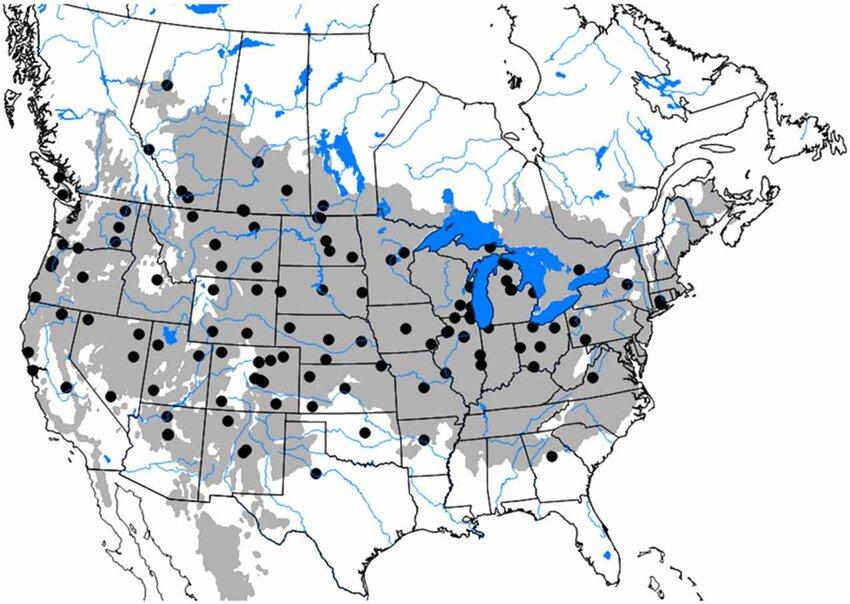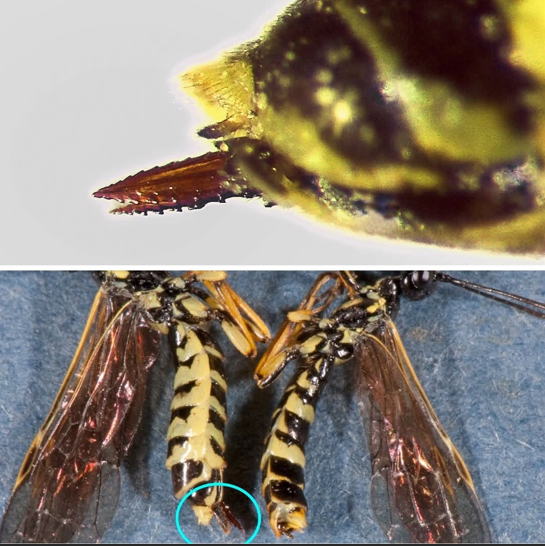IDENTIFICATION OF GENETIC CONTROL OF RESISTANCE TO WHEAT STEM SAWFLY IN BARLEY
Janaki Mahat - Masters Candidate
Although barley has hollow stems, it is less susceptible to
wheat stem sawfly than solid-stemmed wheat, suggesting
distinct genetic mechanisms of resistance. We have identified
gene regions associated with WSS infestation and larval
mortality.
 |
 |
 |
Objective:
To genetically dissect WSS resistance in barley using a Hockett X Craft biparental mapping population.
Introduction:
- Wheat stem sawfly (WSS) is a serious pest of cereal crops, leading to annual wheat yield loss of $50-80 million in Montana with impacts across the US (Achhami et al., 2021).
- No current management practices are 100% effective at controlling this pest.
- Solid stem wheat varieties reduce WSS damage, but solidness varies by environment.
- Barley, despite being hollow stemmed, is less susceptible to WSS than solid stem wheat (Varella et al., 2018) with stem cutting typically less than 10% and rarely exceeding 30%, while wheat can see up to 95% cutting in heavily infested fields (Criddle, 1923; Farstad & Platt, 1946; Wallace & McNeal, 1966).

Potential distribution of Western Wheat Sawfly in North America (Weaver 2023)
Materials and Methods:
- A biparental mapping population of 90 F6 RILs was developed from a cross between Hockett (susceptible) and Craft (resistant) barley cultivars.
- The population was genotyped by USDA ARS Fargo ND with the 50K SNP chip.
- Markers that were not polymorphic and had more than 15% missing information were deleted.
- QTL IciMapping software version 4.2 was used for linkage map construction and QTL analysis.
- For linkage map construction, markers were grouped using a LOD threshold of 3, ordered within groups based on K-optimality with 3 OptTSP, and rippled by LOD using a window size of 8.
- The population was screened with checks at four locations in 2024 across Montana, but only one site had sufficient infestation for genetic analysis.
- % Infestation = (Total Infested Stems ÷ Total # of stems) X 100
- % larval Mortality = {(Infested node intact stems + Infested 1 node burrowed stems + Infested multiple node burrowed stems) ÷ Total infested stems} X 100
- ICIM-ADD model was used for QTL analysis.
Preliminary Results:
Table 1. Summary of WSS infestation by check:
| Trait | Checks | mean | SD | Group |
| Infestation | Craft | 5.71 | 4.63 | a |
| Infestation | MT124128 | 6.91 | 3.40 | a |
| Infestation | Hockett | 12.12 | 7.26 | ab |
| Infestation | MT124128 | 19.29 | 5.63 | b |
Table 2. Summary of larval mortality by check.
| Trait | Checks | mean | SD | Group |
| Mortality | Craft | 93.89 | 4.63 | b |
| Mortality | MT124148 | 75.00 | 3.40 | b |
| Mortality | Hockett | 68.37 | 7.25 | ab |
| Mortality | MT124128 | 43.59 | 5.63 | a |
Table 3. QTLs associated with WSS infestation and larval mortality with their additive effects.
| Trait | Chr | Pos (cM) | LOD | PVE(%) | Add |
| Infestation | 4H | 17 | 3.70 | 2.42 | 2.38 |
| Infestation | 4H | 36 | 17.81 | 17.33 | -6.35 |
| Infestation | 7H | 69 | 9.11 | 6.94 | 4.04 |
| Infestation | 7H | 76 | 3.68 | 2.47 | -2.40 |
| Mortality | 1H | 4 | 3.01 | 1.03 | 5.65 |
| Mortality | 1H | 50 | 15.66 | 8.14 | -15.63 |
| Mortality | 1H | 52 | 13.07 | 5.98 | 13.46 |
| Mortality | 1H | 60 | 4.69 | 1.68 | 7.17 |
| Mortality | 3H | 74 | 10.44 | 4.61 | 11.96 |
| Mortality | 3H | 79 | 20.70 | 12.95 | -19.90 |
| Mortality | 6H | 47 | 3.65 | 1.26 | 6.22 |
| Mortality | 7H | 4 | 17.59 | 9.26 | 16.77 |

Figure 5: QTL associated with WSS infestation (red colored) and Larval mortality (green colored).
- Hockett and its progeny MT124128 show higher infestation and lower percentage larval mortality than Craft and its progeny MT124148 (Table 1 & 2).
- First year data indicates gene regions associated with infestation and larval mortality
(figure 5 & table 3). - Craft allele in some QTLs shows both positive and negative effects indicating some potential ghost QTLs.
- The 3H mortality QTL aligns with the solid stem QTL, but barley’s resistance likely involves different mechanisms.
Ever wondered how the wheat stem sawfly got its name?

The name is not from the cutting of the stem by the larva. It's from this nasty looking
saw-like egg-laying structure on the adult female. Pretty wicked!
This appendage, called an "ovipositor," allows the female to saw into the wheat stem
so she can lay her eggs inside the stem.
Now here's a biology class for you: the term "sawfly" is used for an entire suborder
of the order Hymenoptera, which includes sawflies, ants, bees, and wasps. Sawflies
are wasp-like....but are not wasps. As if that could be more confusing! The suborder
of sawflies number more than EIGHT THOUSAND species, all named for their special "saw."
Sawflies are robbing Montana wheat farmers a minimum $65M in revenues annually. They
aren't a friendly pest.
Thanks to Montana Wheat and Barley for the content and Dr. Peterson in the Entomology
Group #montanastateuniversity for the great commentary and photos!

